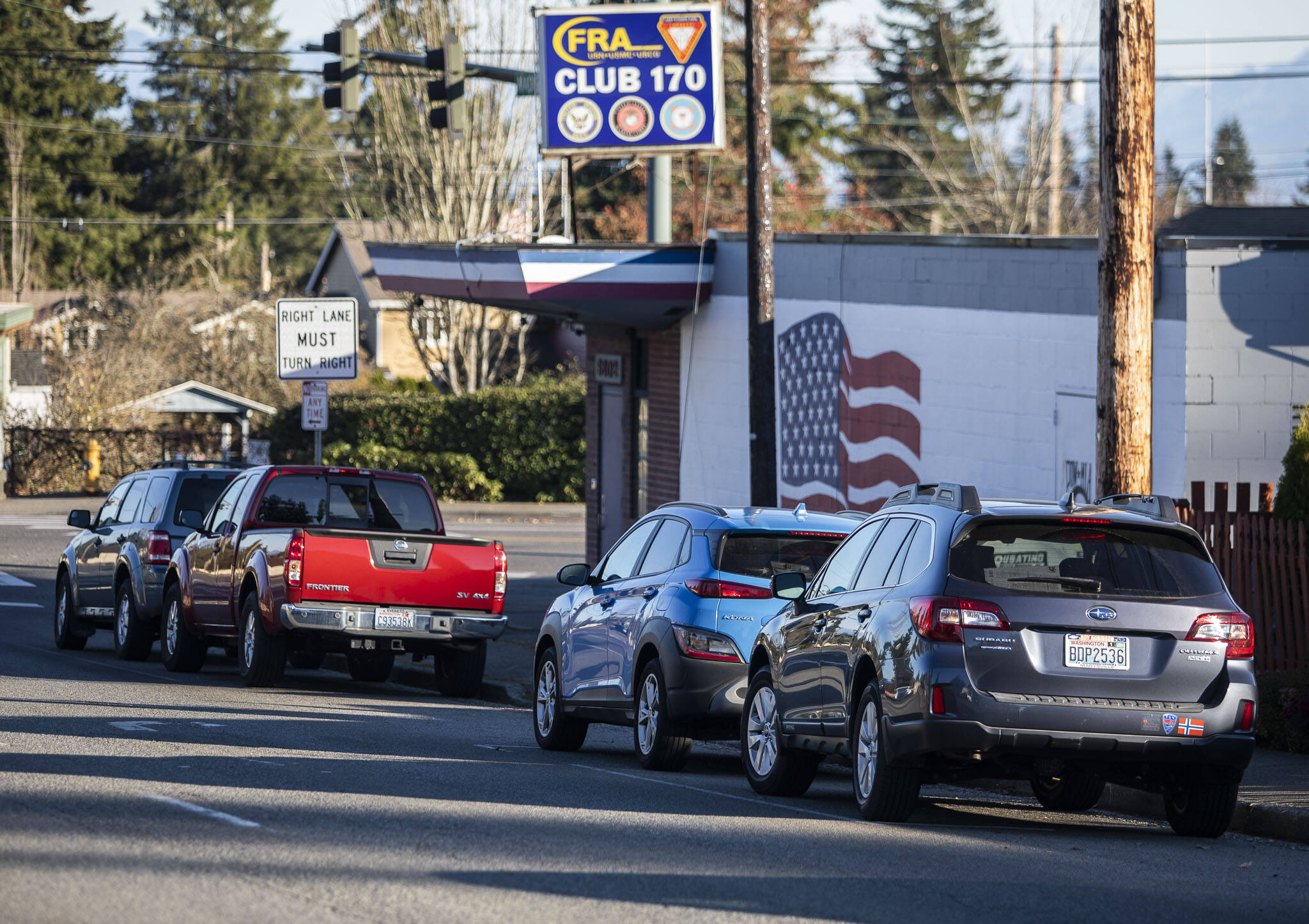EVERETT — Bike lanes are coming, on-street parking is staying and the center turn lane is going for Madison Street in Everett.
The project is scheduled for next summer as part of the overlay work for the road’s surface between Broadway and Sievers Duecy Boulevard. After the road gets stripped and repaved, new markings will dictate how the space is divided.
Bike lanes will extend a similar distance west, but only as far east as the Interurban Trail at Commercial Avenue for a total of under 2 miles.
“I’m excited about the plan for Madison,” Everett Transportation Advisory Committee chairman Tyler Rourke said during the group’s meeting Thursday.
A public survey about the original proposal earlier this year had mixed results. Generally it was supported by participants, but respondents who said they lived on or regularly used Madison Street disliked it, especially the loss of parking.
Some neighbors opposed ceding parking for the bike lanes.
Members of Fleet Reserve Association Branch 170, a veterans club on the southwest corner of Beverly and Madison, opposed the plan that would have scrapped parking along the corridor.
In city council meetings and in a letter, the group’s leaders asked the city to keep the spaces for its members, some of whom are elderly and have disabilities or mobility issues.
The club’s small paved strip adjacent Beverly Boulevard has room for maybe four vehicles, and those are reserved for drivers with handicap placards, branch member Rich Deditius said.
“That’s our only parking basically, the on-street parking,” he said. “Several members have mobility problems, so it’s imperative they park as close as they can.”
The solution was in the middle. Get rid of the center turn lane, make the vehicle lanes more narrow, and use that extra space for bike lanes and parking.
Traffic analysis showed demand for parking was higher than the use of a continuous turn lane, Everett active transportation planner Christina Anna Curtis said.
“There wasn’t a traffic need for the vehicle turn lane,” Curtis said.
Bike lanes going east and west on Madison Street could connect to three other cycling spaces: the Interurban Trail as well as the coming Fleming Street and proposed Sievers Duecy Boulevard bike corridors.
The city’s public works staff propose scrapping the center turn lane from just west of Lower Ridge Road to Colby Avenue, east of Beverly Boulevard. The work also would narrow the parking and vehicle lanes in spots.
The city’s traffic study of this stretch of Madison Street showed a majority of people drove between 5 and 10 mph over the posted speed limited. Smaller driving lanes can reduce travel speeds, city engineer Tom Hood said.
Left-turn pockets would replace the turn lane at intersections with traffic signals and at Lower Ridge Road. An early start at the Evergreen intersection could help cyclists and pedestrians cross the busy seven-lane road.
“This Madison corridor is really the only east-west connection in the entire central Everett area,” Hood said. “It’s location is opportunistic. It really goes a long ways to giving that bike network the east-west connection it needs.”
East of Evergreen, the road will have symmetrical 7-feet-wide parking on the outside, 5-foot bike lanes with 2-foot painted stripe buffers, and 10-foot vehicle lanes.
West from Evergreen, the road will have an 8-foot parking lane on the north side, as well as symmetrical 6-foot biking lanes with 3-foot painted stripe buffers, and 11-foot vehicle lanes. But the section of the road as it approaches Sievers Duecy will keep the turn lane, albeit a few feet smaller, add 2 feet to the existing bike lanes and 2-foot buffers in both directions, and narrow the driving lanes by 1 ½ to 2 feet.
Everett Public Works staff didn’t want bike lanes and buffers wide enough to encourage drivers to use it as a passing lane or parking, Hood said.
More and better space for people to roll and stroll is viewed as a part of addressing climate change. Replacing car trips with a bike, scooter or walk can relieve traffic congestion and reduce greenhouse gas emissions.
But a lot of people aren’t eager to share the road with cars, even where legal (which is most roads) because of the danger posed by drivers.
Building bike lanes can make that change safer and is part of the city’s Bike Master Plan, a document which guides the city’s investments for cycling projects.
Annually Everett spends around $3 million on pavement overlay to repair and resurface select roads.
The contract for all of the overlay work will likely be awarded by spring, in time for summer when road work occurs.
Ben Watanabe: 425-339-3037; bwatanabe@heraldnet.com; Twitter: @benwatanabe.
Talk to us
> Give us your news tips.
> Send us a letter to the editor.
> More Herald contact information.

























